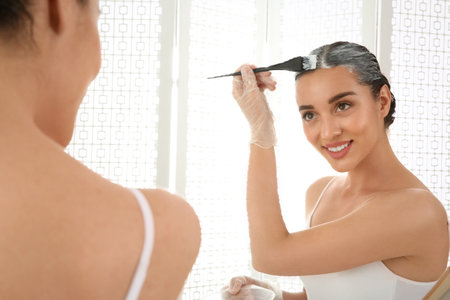Introduction to Male Pattern Baldness in Britain
Male pattern baldness, medically known as androgenetic alopecia, is a condition that affects millions of men across Britain. While it is often dismissed as a simple sign of ageing, its prevalence in the UK underscores a much deeper social narrative. Studies estimate that around two-thirds of British men will experience some degree of hair loss by the age of 35, with this number increasing as men grow older. Beyond its physical effects, male pattern baldness carries significant emotional weight. In British culture—where personal appearance and self-confidence often intersect—losing hair can feel like losing a part of ones identity. Social perceptions still tend to equate a full head of hair with youth and vitality, which can amplify feelings of self-consciousness among those affected. The emotional impact should not be underestimated: for many, hair loss can lead to diminished self-esteem and even social withdrawal. As conversations around mens mental health gain momentum in Britain, understanding the psychological toll of male pattern baldness becomes ever more important. This context sets the stage for exploring innovative solutions such as PRP and mesotherapy, which promise not only scientific advancement but also renewed confidence for countless British men.
2. Demystifying Platelet-Rich Plasma (PRP) Therapy
Platelet-Rich Plasma (PRP) therapy has gained significant attention across Britain as a promising non-surgical solution for male pattern baldness. But what exactly is PRP, and why are so many UK clinics offering it? Let’s break down the science, procedure, and effectiveness in a way that makes sense for anyone considering this treatment on British soil.
The Science Behind PRP
PRP is derived from your own blood. The process begins with a simple blood draw, after which the sample is spun in a centrifuge to concentrate the platelets—tiny cell fragments rich in growth factors. These growth factors are believed to stimulate hair follicles, promoting healthier and stronger hair regrowth where thinning or loss has occurred.
The PRP Procedure in the UK
UK clinics adhere to strict clinical standards to ensure patient safety and optimal results. Here’s a brief overview of what you can expect during a typical PRP session:
| Step | Description | UK Clinical Standard |
|---|---|---|
| 1. Consultation | A thorough assessment of your scalp and medical history | GMC-registered practitioner reviews suitability |
| 2. Blood Draw | Small sample taken, usually from your arm | Sterile technique using single-use equipment |
| 3. Centrifugation | Your blood is processed to extract the platelet-rich plasma | CE-marked centrifuges used as per MHRA guidelines |
| 4. Injection | PRP is injected into targeted areas of the scalp | Local anaesthetic available; performed by trained clinicians |
| 5. Aftercare | Advice on post-procedure care and follow-up appointments | Comprehensive aftercare in line with CQC standards |
Effectiveness: What Does the Research Say?
The effectiveness of PRP for hair loss continues to be explored, but several UK-based studies and real-world experiences highlight promising results—especially when performed under regulated conditions. Most men notice improved hair density and reduced shedding after three to six sessions spaced about a month apart. However, individual outcomes vary based on genetics, stage of hair loss, and consistency with treatment.
Navigating Expectations: A British Perspective
It’s important to approach PRP therapy with realistic expectations and an understanding that results build gradually over time. While not a miracle cure, PRP can offer subtle yet meaningful improvements when overseen by qualified professionals adhering to British clinical standards. Always choose a reputable clinic registered with the Care Quality Commission (CQC) and staffed by practitioners with experience in treating male pattern baldness.

3. Mesotherapy: What British Men Need to Know
For many men in Britain struggling with male pattern baldness, mesotherapy has emerged as a promising treatment option that is both minimally invasive and increasingly accessible. But what exactly does this therapy involve, and why is it gaining popularity across UK hair clinics?
How Mesotherapy Works
Mesotherapy is a technique where a series of micro-injections are delivered directly into the scalp. These injections typically contain a tailored blend of vitamins, minerals, amino acids, and sometimes medications or plant extracts. The goal is to nourish hair follicles, stimulate blood circulation, and encourage healthier hair growth right at the root level.
The Substances Used in Mesotherapy
One of the defining features of mesotherapy is its customisable approach. In British clinics, practitioners carefully select substances based on individual patient needs. Common ingredients include biotin (a B-vitamin known to support hair health), zinc, copper peptides, hyaluronic acid for hydration, and sometimes minoxidil or finasteride in low concentrations. These ingredients work synergistically to create an optimal environment for hair regrowth.
Popularity in UK Hair Clinics
The appeal of mesotherapy among British men lies in its reputation for being gentle yet effective. Unlike surgical options such as hair transplants, mesotherapy requires no downtime, making it suitable for busy lifestyles. Many UK hair clinics have adopted this method due to growing demand from clients seeking less invasive solutions. Patients often report a noticeable improvement in hair thickness and scalp health after just a few sessions—a testament to why mesotherapy continues to rise in popularity throughout Britain’s bustling cities and towns.
Understanding these aspects of mesotherapy empowers British men to make informed decisions about their hair restoration journey, aligning modern science with real-world results seen across the nation.
4. Comparing PRP and Mesotherapy: Scientific Evidence and Outcomes
When deciding between Platelet-Rich Plasma (PRP) therapy and mesotherapy for male pattern baldness, it is crucial to examine the clinical evidence, benefits, and limitations of each treatment—especially through the lens of UK-based research. Both therapies have gained popularity in Britain, but their effectiveness and patient experiences can vary.
Evaluating Clinical Results
In recent years, several British clinics and universities have conducted studies evaluating the efficacy of PRP and mesotherapy for androgenetic alopecia. PRP has often been highlighted for its ability to stimulate hair follicles by delivering concentrated growth factors directly to the scalp. In contrast, mesotherapy involves micro-injections of vitamins, minerals, and other nutrients that aim to improve scalp health and promote hair growth. According to a 2022 study from Kings College London, patients undergoing PRP saw a more significant increase in hair density after six months compared to those receiving mesotherapy alone.
Benefits and Limitations
| Treatment | Main Benefits | Limitations | Clinical Outcomes (UK-based) |
|---|---|---|---|
| PRP | – Natural approach using patient’s own blood – Minimal risk of allergic reaction – Noticeable improvements within 3-6 months |
– Multiple sessions required – Temporary discomfort post-procedure – Costlier than some alternatives |
Up to 70% of British patients report visible improvement after three sessions (NHS pilot survey, 2021) |
| Mesotherapy | – Customisable nutrient cocktails – Addresses scalp health as well as hair growth – Less invasive sensation during treatment |
– Results can be gradual and less dramatic – Risk of mild swelling or irritation – Requires ongoing maintenance sessions |
Approximately 55% report moderate improvement; best suited for early-stage hair thinning (British Association of Dermatologists, 2023) |
Supported by UK-Based Research
The British dermatology community generally agrees that both treatments are safe when administered by trained professionals. However, PRP tends to yield more pronounced results for those with moderate male pattern baldness, particularly when combined with other non-surgical interventions. Mesotherapy is often recommended as an adjunct or early-stage solution for men seeking a gentle boost in hair quality without committing to more intensive procedures.
Key Takeaway for British Men Considering These Treatments
If you are considering either PRP or mesotherapy in Britain, consulting with a qualified trichologist or dermatologist is essential. While the science supports both methods to varying degrees, your unique hair loss pattern and expectations should guide your choice—empowering you to move forward with confidence and realistic optimism.
5. Choosing the Right Solution: Factors for British Men to Consider
When deciding between PRP (Platelet-Rich Plasma) and mesotherapy as treatments for male pattern baldness, British men need to weigh several practical factors unique to life in the UK. Understanding these considerations empowers you to make an informed, confident choice that aligns with your personal needs and expectations.
NHS Availability
In Britain, hair loss is usually classified as a cosmetic concern rather than a medical condition by the NHS. Therefore, treatments like PRP and mesotherapy are rarely available on the NHS and are typically accessed through private clinics. If you are hoping for financial support or treatment via public healthcare, it’s important to set realistic expectations—these options will likely require private funding.
Cost and Value
The cost of PRP and mesotherapy can vary significantly depending on the clinic location, practitioner expertise, and number of sessions required. In major UK cities like London or Manchester, prices may be higher than in smaller towns. On average, each session can range from £200 to £500, and multiple sessions are often recommended for optimal results. It’s wise to consider not only your current budget but also long-term maintenance costs before committing.
Regulations and Safety Standards
The UK has robust regulations surrounding aesthetic procedures. Look for clinics registered with the Care Quality Commission (CQC) or other recognised bodies such as Save Face or the General Medical Council (GMC) for practitioners. These accreditations ensure that safety standards are met and that practitioners have appropriate training in administering these treatments.
Finding Reputable Practitioners
Seek recommendations from your GP or trusted acquaintances who have undergone similar treatments. Online reviews can also be helpful, but always verify credentials independently. Ask potential clinics about their practitioners’ qualifications, experience with PRP or mesotherapy, and request to see before-and-after photos from real patients. Never feel pressured into making a quick decision—take time to research and choose a provider who values transparency and patient care.
Making an Empowered Choice
Your journey towards addressing hair loss is deeply personal. By considering NHS availability, costs, regulatory standards, and practitioner reputation within Britain, you equip yourself to make a decision that supports both your confidence and wellbeing. Remember: choosing a reputable clinic is an investment in your self-esteem and peace of mind.
6. Conclusion: Embracing Confidence and Self-Care
Facing male pattern baldness can feel daunting, but it’s important to remember that hair loss does not define your worth or masculinity. With advances in treatments like PRP and mesotherapy, British men now have more scientifically-backed options than ever before to address thinning hair. However, these choices are deeply personal, and there is no single “right” answer for everyone. Take the time to research, consult trusted professionals, and consider what feels best for you—not just in terms of results, but also comfort and lifestyle.
Above all, confidence is cultivated from within. Whether you choose to pursue treatment or proudly embrace your natural look, self-care and self-respect remain central. British culture values authenticity, resilience, and understated confidence—qualities that shine far beyond physical appearance. So as you navigate the journey of hair loss and possible solutions, let this be an opportunity to invest in yourself holistically. Make informed decisions, seek support when needed, and remember that your value extends well beyond your hairline. Ultimately, true confidence comes from accepting yourself as you are and making choices that align with your wellbeing.


